With Spring Training beginning it's third week of play, a lot of interesting questions have sprung up around Giants camp in Scottsdale.
1.) Is Madison Bumgarner going to start the year in San Francisco or Fresno?
2.) Is Fred Lewis going to be traded or released considering he has no minor league options left on his contract?
3.) When will Buster Posey supplant Bengie Molina in the starting lineup next season?
While all those questions are interesting, I will be examining one question that is commonly lost in the shuffle of all the "big-name" Spring Training headlines:
Which prospects are making a name for themselves this Spring Training?
Granted, there are a lot of names: Nick Noonan, Brandon Crawford, Francisco Peguero, Darren Ford, Kevin Pucetas, Steve Edlefsen, etc. The list really could go on and on and on.
That being said, there are three outfield prospects that have gauged my interest since last season: Thomas Neal, Roger Kieschnick and Wendell Fairley.
All three prospects have come with some kind of reputation going into Spring Training (and they are all Non-Roster invitees by the way). Which guys are coming off solid seasons in 2009? Which guys are primed for success in 2010 and beyond? And which guys are making progress this Spring in Cactus League play?
Let's take a look at the outfielders and their profiles.
(Note: Spring Training stats are accumulated before today's game against Cleveland.)
Thomas Neal (22, 36th round draft pick of the 2005 MLB Draft)
(Highest level reached: High-A San Jose)
How Did Neal Perform in 2009?
Though a later rounds pick, Neal has burst onto the scene in the San Francisco Giants organization. Last year, in San Jose, Neal put up unbelievable numbers in California League play. In 129 games, he hit .337 with 22 home runs, 90 RBI, scored 102 runs and put up a .431 OBP, a 1.010 OPS, and a wOBA (weighted on base average using linear weights) of .444. Additionally, Neal showed solid patience at the plate, as evidenced by his 11.6 walk rate and 0.66 BB/K ratio.
Neal was such a stud last year in the minors that Fangraphs writer Marc Hulet listed him as the No. 3 prospect in the Giants organization, behind only Buster Posey and Madison Bumgarner. To put this high ranking into context, Neal ranked ahead of Dan Runzler (no. 4), Waldis Joaquin (no. 10), and Francisco Peguero (no. 9), all players that are currently on the Giants 40-man roster going into the 2010 season.
How Good of a Player is Neal?
Neal has the potential to be a force on the offensive end. Though, his 2009 season was obviously his magnus opus so far of his Minor League career, Neal also showed excellent potential the last couple of seasons.
In 2007, before he got hurt, he hit .318 with an .875 OPS and a .419 wOBA in Arizona Rookie League (he only played 10 games before he was injured and missed the rest of the year). The most promising numbers of his short season were his walk percentages and BB/K ratios, which happened to be 10.9 and 0.71, respectively.
In 2008, Neal showed steady improvement, and proved that his injury was a thing of the past. In Single-A Augusta, he put up a .276 average, a .359 OBP, an .803 OPS and a .359 wOBA. Though his walk percentage fell to 9.6, and his BB/K ratio fell to 0.47 in 2008, his power numbers made up for the drop in his plate patience categories. In Augusta, Neal hit 15 home runs, 25 doubles, drove in 81 RBI and scored 69 runs.
As you can see, there is a lot Neal can offer to this Giants organization on the offensive end. His 37 homers the past couple of years show he has power potential, and his 171 runs scored and RBI the past two years in Augusta and San Jose show that he is capable of generating a lot of runs (something the Giants need after ranking 25th in the Majors in runs scored last season). Furthermore, Neal shows a lot of patience at the plate and is able to generate walks impressively at the Minor League level. In his four minor league stints in Salem-Keizer, Arizona, Augusta, and San Jose, Neal has only had a walk percentage under 9.6 once (3.7 his rookie year of professional ball in Salem-Keizer).
What Could Hold Neal Back?
While Neal has a tendency to draw a good amount of walks, he is also susceptible to striking out quite a bit too boot. In 2009, he struck out 20.6 percent of the time and in 2008, he struck out 24.1 percent of the time as well. In fact, in his four stints at the Minor League level, Neal has only had a strikeout percentage under 20 percent once (2007, where it was 17.9 percent, but that was only in 10 games).
Additionally, there have been a lot of questions about Neal's defensive ability. While he is a solid offensive player, many experts do not think Neal has the defensive ability to be a regular outfielder for the Giants in the future (especially considering AT&T Park's tough dimensions). Many believe that Neal should probably move to first base to hide his average defensive abilities. Do I agree with those critics? It's tough to say, but if you look at his range factor per game numbers (1.64 RF/G in LF in San Jose), perhaps a move to first base wouldn't be such a bad idea for Neal.
How's Neal Doing so Far in Spring Training?
He isn't getting a ton of playing time, so you have to take these numbers with a grain of salt. That being said, he hasn't wowed statistically at the plate so far in Cactus League play. In nine at-bats, Neal has only one hit, and has a .222 OBP, a .125 slugging percentage, and a .125 batting average. To make matters worse, he has also struck out three times, which doesn't bode well for him silencing those critics who say he strikes out too much at the Minor League level.
Prediction on Neal: A solid player, who will be either a star or at the very least, an above-average MLB player. It probably won't happen next year, but definitely expect Neal to be on the 40-man roster and competing for a spot on the 25-man active roster in 2011.
Roger Kieschnick (23, 3rd round draft pick of the 2008 MLB Draft)
(Highest level reached: High-A San Jose)
How Did Kieschnick Perform in 2009?
Kieschnick, a rookie out of Texas Tech University, came out and performed well in his first season in the minors. In San Jose, he hit 23 home runs, 37 doubles, 8 triples, drove in 110 RBI and scored 86 runs. Also, he posted a .296 average, a .345 OBP, a .876 OPS, and a wOBA of .381. Kieschnick also showed some speed and ability on the basepaths, as evidenced by his 9 stolen bases on 10 attempts.
For a player just one year removed from college, Kieschnick showed that he was well ahead of schedule offensively, which led to him being a Non-Roster invitee this Spring Training.
How Good of a Player is Kieschnick?
Offensively, there is a lot Kieschnick offers. He can hit for power and he can hit for average to boot. Furthermore, he's above average defensively in right field (he posted a 1.75 RF/G last year and had 11 outfield assists) and he has good speed for his size (he's six-foot, three-inches and weights 200 pounds).
If you have to compare Kieschnick to anybody on the Giants current roster, the best example may be Nate Schierholtz. That being said, Kieschnick may have more power potential than Schierholtz (Schierholtz never hit more than 18 home runs at any level in the Minor Leagues).
What Could Hold Kieschnick Back?
Kieschnick has only one Minor League season under his belt, but there were some alarming numbers in his plate patience categories. In San Jose last year, he only had a 6.4 walk percentage and a BB/K ratio of 0.28. Furthermore, his strikeout rate was uncomfortably high at 25.1 percent. Those numbers aren't exactly promising, especially considering they occurred at only High Single-A.
To make matters worse, Kieschnick proved to be extraordinarily lucky in terms of finding hits. His BABIP was .352 last year. While that number isn't incredibly high in general, his lack of ability to draw walks (and strikeout often) could mean that his stats could take a massive hit if his BABIP dips. Considering that the California League is widely known as a "hitter's league," it is unlikely that Kieschnick will be able to sustain a high BABIP again in Double-A or Triple-A in 2010.
How's Kieschnick Doing So Far in Spring Training?
He has two less at-bats than Neal, but Kieschnick has already put up good numbers. He has three hits, has scored one run and drove in one RBI. He also has one stolen base on one attempt.
Yet the best numbers for Kieschnick this Spring Training? He has zero strikeouts and one walk in seven games.
Prediction on Kieschnick: Kieschnick has a potential to be a Schierholtz with more pop on the bat. However, whether or not he lives up to that comparison is very tough, considering he has only one year of professional baseball underneath his belt. That being said, Kieschnick will be a very interesting player to watch as he makes a transition to Double-A this season.
Wendell Fairley (22 on March 17, 1st round pick of the 2007 MLB Draft)
(Highest level reached: Single-A)
How Did Fairley Perform in 2009?
To be honest, not very well. Fairley stats in Augusta were very disappointing across the board. He posted a .243 batting average, a .323 OBP, a .656 OPS, and a .307 wOBA for the Greenjackets last season. His plate patience numbers were atrocious as well, as he had a walk percentage of 9.2, a strikeout percentage of 29.9 and a BB/K ratio of 0.35 (a 35-point drop from his 2008 in Arizona Rookie League, where his BB/K ratio was 0.70).
Also, while Fairley was touted in 2007 for his "Five Tool" ability, Fairley didn't show much on the basepaths or out on the field. He only had two stolen bases on six attempts, he committed seven errors and only posted a RF/G of 1.36 in left field in 2009.
How Good of a Player is Fairley?
Obsessive Giants Compulsive gave a pretty good review of Fairly when he was drafted back in 2007, and after reading it, you feel some hope that the kid can turn it around after a slow start in the Minor Leagues so far.
Despite putting up pedestrian stats in average, stolen bases and slugging his first two years in Rookie and Single-A, Fairley showed some promising plate patience in 2008 in Arizona Rookie League. In 52 games, Fairley posted a a .388 OBP, a .363 wOBA and a 0.70 BB/K ratio (compounded by a 10.9 walk percentage). While he took a step back in Augusta in 2009, it isn't completely out of the question that 2009 was just an off-year for him. After all, while his strikeout rate inflated with the Greenjackets, his walk rate didn't regress all that much.
Another factor in Fairley's favor is the fact that he is still young and he has time to develop. He can afford to spend another year in Augusta to fine tune his game and approach at the plate.
What Could Hold Fairley Back?
Well...to put it kindly...a lot.
Fairley wasn't quite heralded when he was drafted (many felt he was drafted too high), and he was deemed a "tumbler" in the Giants minor league system after his ROOKIE year (that was before his atrocious season in Augusta in 2009).
In many ways, Fairely suffers from the same problems a lot of guys with "multiple tools" suffer from: high strikeout rates, not as much power as advertised, etc. However, the most concerning aspect of Fairley's game has to be his stolen base ability. He just isn't very good at swiping bags, and that may hurt his value and his projection as a player in general. In 2008, he had 7 stolen bases on 10 attempts. Then, he dipped to two the next season. What makes it worse? The fact that he played in 54 more games in 2009 than 2008, and he had five LESS stolen bases.
Darren Ford, another "multiple tools player," also struggled at the plate for a couple of years in Single-A in the Milwaukee Brewers' organization. Yet, Ford always posted solid stolen base numbers to combat his mediocre offensive averages and power numbers. Fairley doesn't even have the luxury of that. So, it makes you wonder: what does Fairley offer this Giants organization?
How's Fairley Doing So Far in Spring Training?
Amazingly, Fairley isn't doing all that bad. He does have two strikeouts in four at-bats, but he does have two hits, including a double, and has accumulated three total bases. Thus, Fairley's averages look great so far (.500 average and OBP, .750 slugging percentage). That being said, considering the sample is so small, his high offensive averages are probably a fluke, and if given more playing time, it is highly likely that his numbers this Spring will fall down to earth.
Prediction on Fairley: There's still some potential, but not a lot left after two sub-par seasons in the Minors. Unfortunately, Fairley doesn't offer the Giants much and doesn't seem to excel in any category, be it at the plate, defensively, or on the basepaths. From what it seems, he was drafted too high in 2007, and he'll never be able to live up to the expectations of being a first round pick.
Subscribe to:
Post Comments (Atom)




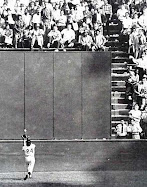
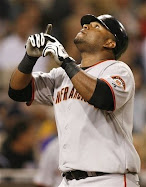
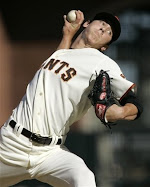
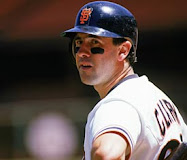
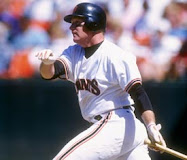
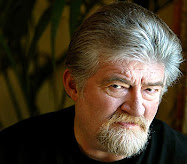

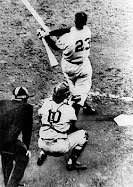
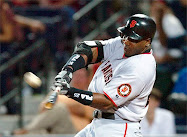
No comments:
Post a Comment